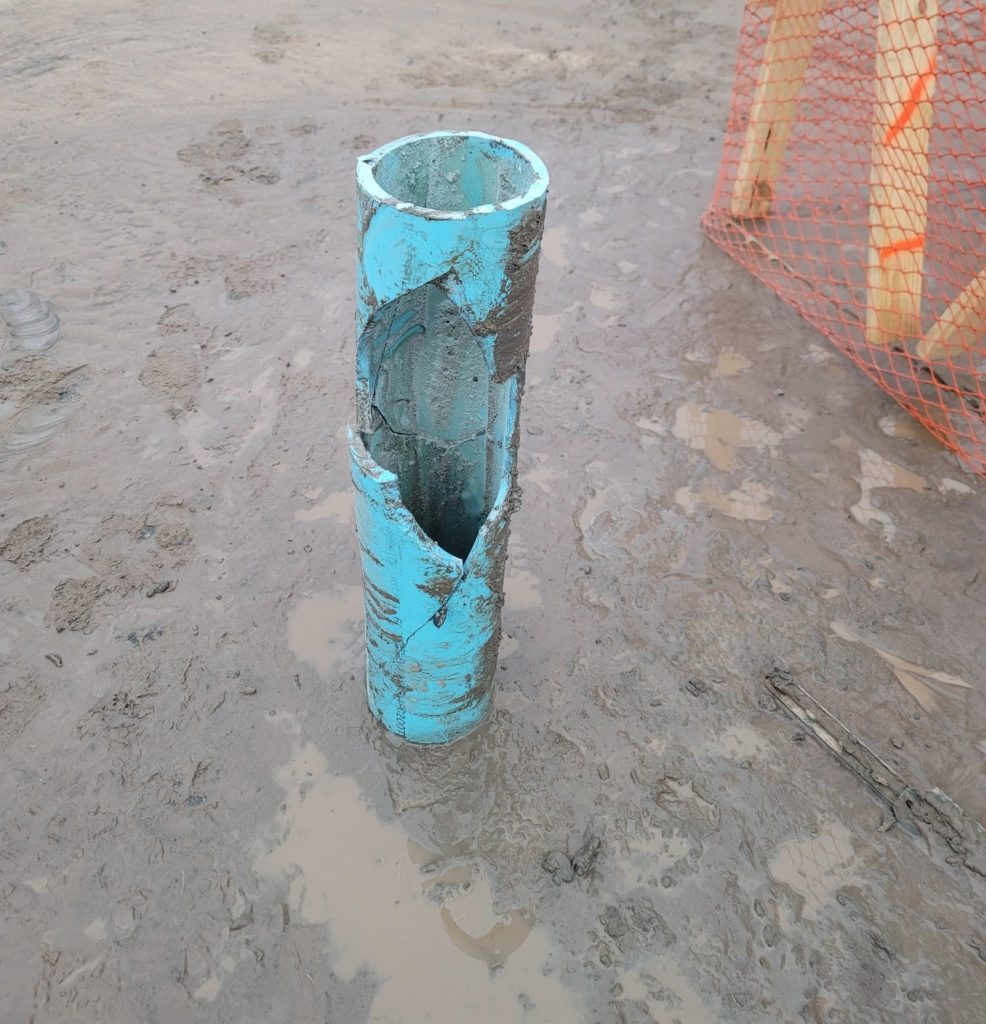Utility Strike (Unmarked) Ruins Everyone’s Day
A utility strike represents one of the most common ways a horizontal directional drilling (HDD) project can quickly turn south. And while we normally like to highlight the interesting successful jobs, we must recognize that sometimes things go wrong. Without facing bad project outcomes head on, we can’t expect to improve operations or learn from mistakes.
Ellingson-DTD crews recently dealt with this common challenge on an environmental remediation project in the Southeast US. The project objectives included installing two horizontal SVE wells underneath a hotel as part of a vapor mitigation effort. In other words, this job was about as “routine” as an HDD well installation can get.
However, the routine nature of the project did not dampen the vigilance for utility awareness. Prior to mobilization, the project team carefully reviewed the property’s as-builts and identified all known public and private lines in the area. Like most commercial properties, underground utilities crisscrossed all over the parking lot and landscape areas surrounding the building.
Both the client and Ellingson PMs notified local dig alert services prior to project mobilization. Additionally, a private utility locating subcontractor surveyed the site in advance. Finally, during the initial mobilization effort, crews potholed the known subsurface utilities located close to the planned bore alignments.
Despite all these precautions, during the second well installation, the pilot bit drilled through an unmarked water line about 20 ft out from the entry pit. Water flooded the parking lot, and the project lost several days’ worth of time dealing with the repercussions.
Was This Particular Utility Strike Avoidable?
So…what happened? The PVC water line was part of a private fire suppression system for the hotel but wasn’t on the as-builts. As a private line, it didn’t pop up on the USA one-call ticket, and its PVC construction avoided perception by the private locator’s ground penetrating radar equipment.
In hindsight, the valve header on the side of the building could have raised a red flag for field personnel given that its presence implied the proximity of a high-pressure water line, but nothing had been marked.

As a part of a private fire supression system, this PVC water line did not show up on as-builts, pre-project GPR utility surveys or in the One-Call database.
In response to this incident, Ellingson expanded our existing pre-project checklist and protocols for utility strike prevention.
The list now includes not only known utilities, but also likely or expected utilities. Hopefully these additions bring the possibility of private or otherwise unmarked utilities like this one to the front of mind of field personnel. Perhaps heightened awareness and a more thorough site inspection could have prevented this particular outcome.
This project highlights how incredibly difficult it can be to avoid a utility strike. And HDD projects represent a particularly acute challenge with increased risk. An HDD bore often remains in the “utility zone” (i.e 0-10ft BGS) for much if not all of the alignment.
When it comes to utility awareness on HDD projects, you can never be too vigilant. Everyone from the management team back in the office, to the crews in the field must dot every “i” and cross every “t”. Even still, “stuff happens”, and when it does, it’s important to learn from the incident rather than ignore it.
Tags: HDD, horizontal wells, lessons learned, utilities, utility strikes